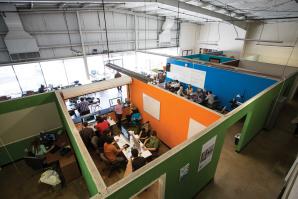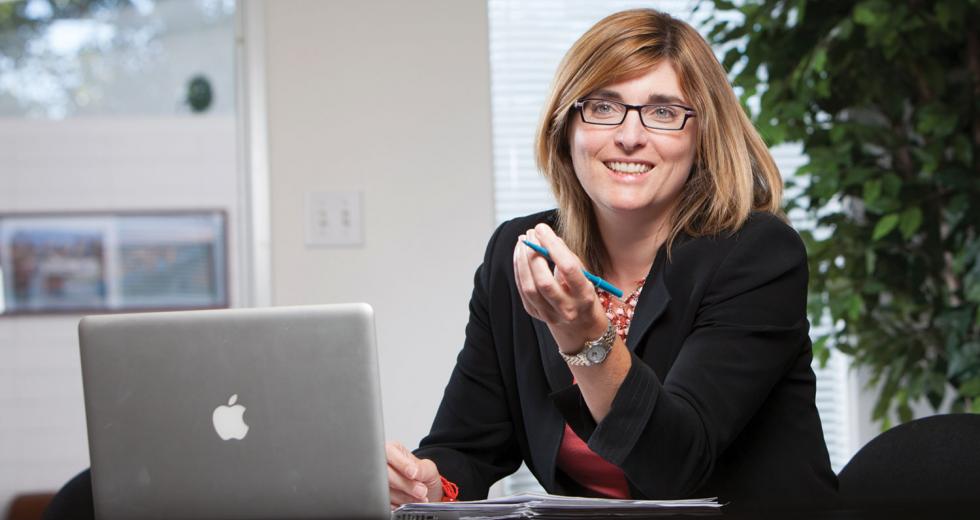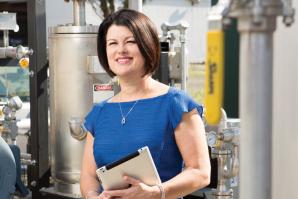For more than a decade Meg Arnold has been actively supporting technology commercialization and entrepreneurship throughout the Capital Region. Over a six-year tenure at UC Davis, she participated in technology transfer licensing to new startups and was involved with UC Davis Connect and the Innovation Access Network, programs that support campus-originated startups.
In November 2009, Arnold became CEO of the Sacramento Area Regional Technology Alliance, a nonprofit dedicated to accelerating the growth and development of the region’s technology sector.
This month, SARTA hosts the 6th Annual Clean Start Showcase at Sacramento State. Since 2005, Clean Start has been stimulating the development and success of early-stage, clean technology companies and helping to build a regional clean tech sector. Comstock’s recently sat down with Arnold to gain insight on the state of the region’s clean energy efforts.
Comstock’s: What’s the overall state of
venture capital funding for clean technology?
Meg Arnold: The venture sector is going through
significant changes in its own world in terms of what investors
are interested in and the levels of risk they’re willing to
assume. Globally, there’s been lots of consolidation, the overall
size of the fund is larger and the number of venture funds is
diminishing. One of the side effects of this is that it becomes
more difficult to do smaller deals.
Comstock’s: How does this affect clean
technology companies in our region?
Arnold: Early-stage companies, which are the
majority of the local green-tech companies, need about $1 million
for their first round of funding. There are fewer active VCs they
can approach. It’s resulting in an increasing gap for that amount
of funding, and companies with smaller funding needs are finding
it hard to get through.
Comstock’s: So, what are their
options?
Arnold: They first go to angel investors, high
net-worth individuals investing in very early stage companies,
often a group of them investing together. Over the last year, a
new class of angel investor has emerged to fill the funding gap
for startup companies. They invest larger amounts than typical
angel investors; they’re called super angels. There are three
channels we see Sacramento area companies going to: grants from
the federal government, which are not huge dollar amounts;
locally based, small venture funds; and bootstrapping. If you
have a product you can get to market, try selling it, and then
customers will help create a cash flow.
Comstock’s: What about clean energy funding,
specifically?
Arnold: Globally, we’ve seen just over $1.5
billion in funding in the clean tech industry in the second
quarter, a little down from $1.9 billion in the previous quarter.
It’s also down from 2011, but down from historic highs. In our
region, American River Ventures had a very strong clean energy
and energy efficiency investing theme, and firms like Velocity
Venture Capital are very focused on investing locally.
Comstock’s: What are some of the important
clean energy sectors in the region?
Arnold: Energy efficiency products and solar
panels. The Energy Efficiency Center at UC Davis and the Smart
Grid Center at Sac State are well-recognized centers of research
into the management of power. Tools related to managing power
have significant potential in the clean power spaces, partly
because they are software driven, so they can be taken to market
on a quick timeframe and require fairly low capital up front.
Comstock’s: What will the scenario be for
clean energy funding in the near future?
Arnold: I think it remains challenging to find
and close venture money. As always, deals are chasing a limited
pool of investors. But at the same time, companies in this region
are finding work-around ways to achieve funding. One of the
characteristics of the clean tech market is its reliance on
government policy. The election in the fall and the politics
surrounding that is adding uncertainty to the market. The new
administration will need to modify or confirm energy policy, and
that will bring clarity to the market. As the economy continues
to recover, there’s been good news on jobs both nationally and in
the Sacramento region, which will bring a greater level of
activity in the venture market and have a flow-through effect to
our region.
Globally, we’ve seen just over $1.5 billion in funding in the clean tech industry in the second quarter, a little down from $1.9 billion in the previous quarter.
— Meg Arnold, CEO of the Sacramento Area Regional Technology Alliance
Comstock’s: Could clean energy become an economic driver for the Capital Region?
Arnold: Growth of tech companies is critical to our economic future because it helps to diversify our job base. Thirty percent of the region’s jobs are in government, and for a healthy economy, that number needs to come down, which means other numbers need to grow. For many clean energy companies, their customers are not in this region, so when selling, they’re bringing in money from outside the region and creating wealth.
Comstock’s: Where do you see the region’s
clean energy industry in the future?
Arnold: There are about 100 companies in the
clean tech sector in the Sacramento region. There are about 450
tech companies now. In five years, I envision 600 tech companies
operating, many of them in clean tech.
Did you know?
California stands to gain nearly 21,000 jobs from 16 clean-energy projects announced just in the second quarter of this year, according to a report from Environmental Entrepreneurs, a national group of policy and business leaders. Nationwide, more than 70 major clean energy projects were announced in Q2.
Recommended For You

Tech Magnet
Are building owners ready to view leases through a new lens?
When Hacker Lab outgrew 800 square feet on Franklin Boulevard last year, the founders needed more than additional space. They needed a change of scenery.




